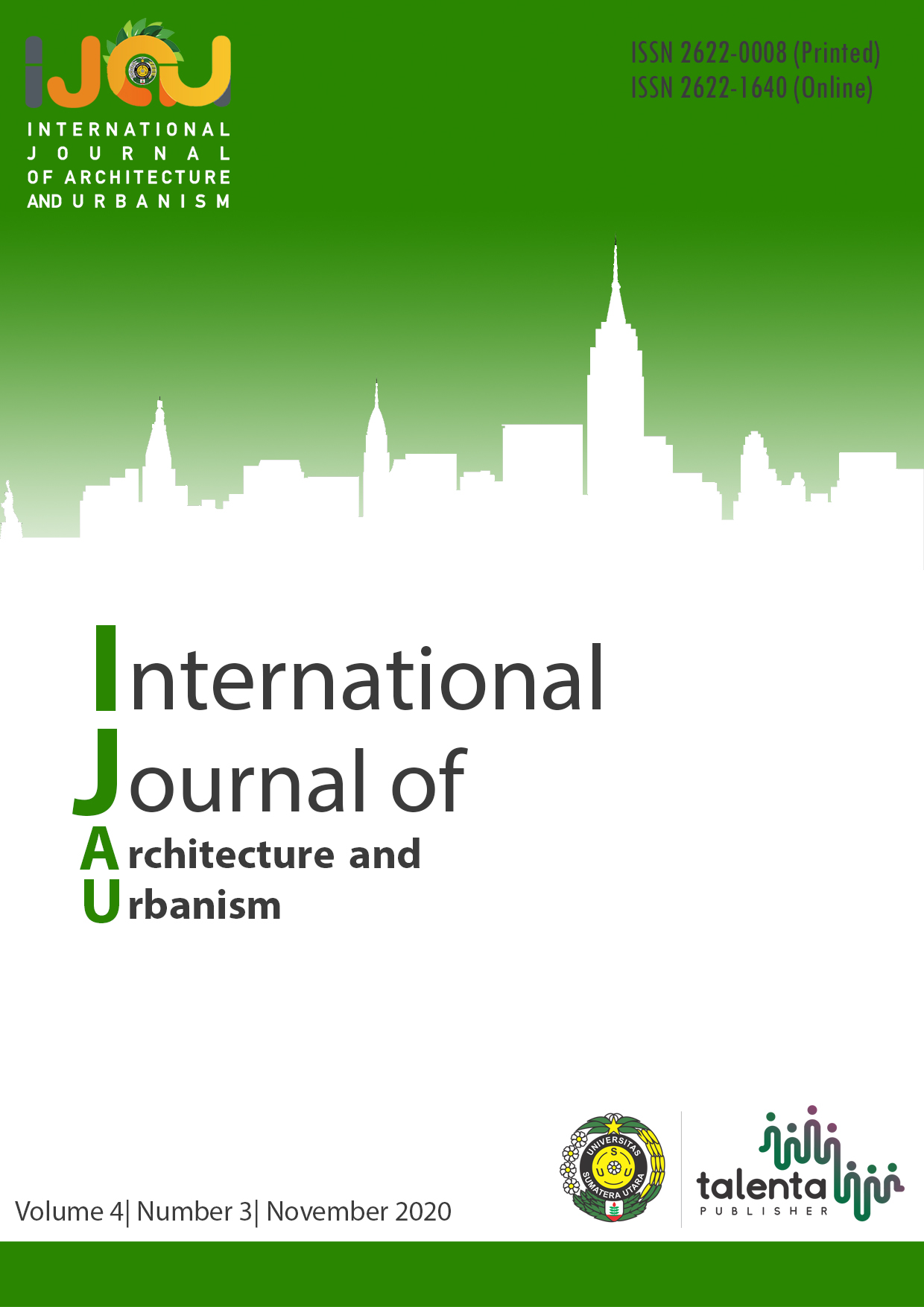Urban Settlement Patterns in edge of Railroad in Medan City
DOI:
https://doi.org/10.32734/ijau.v4i3.5034Keywords:
Medan City, patterns of settlements, railroadAbstract
As a developing city, Medan City becomes an alternative destination for immigrants who come from various places outside the city of Medan, either for a place to live or earn a living. As a result of this activity, the city of Medan is overgrowing, thus demanding new housing in the form of planned and unplanned settlements. Unplanned settlements arose when the need for housing for newcomers who had a low economy was encouraged. Most of the unplanned settlements became residential spaces built in areas that were not officially planned as residential spaces, such as on railroads' outskirts. The research method used is qualitative because the problem to be studied is social and dynamic. The conclusion obtained from the analysis is that the settlement pattern on the Medan City railroad banks is linear, and settlements grow due to economic, topographic, and infrastructure factors
Downloads
Downloads
Published
How to Cite
Issue
Section
License
Copyright (c) 2020 International Journal of Architecture and Urbanism

This work is licensed under a Creative Commons Attribution-ShareAlike 4.0 International License.


.png)










